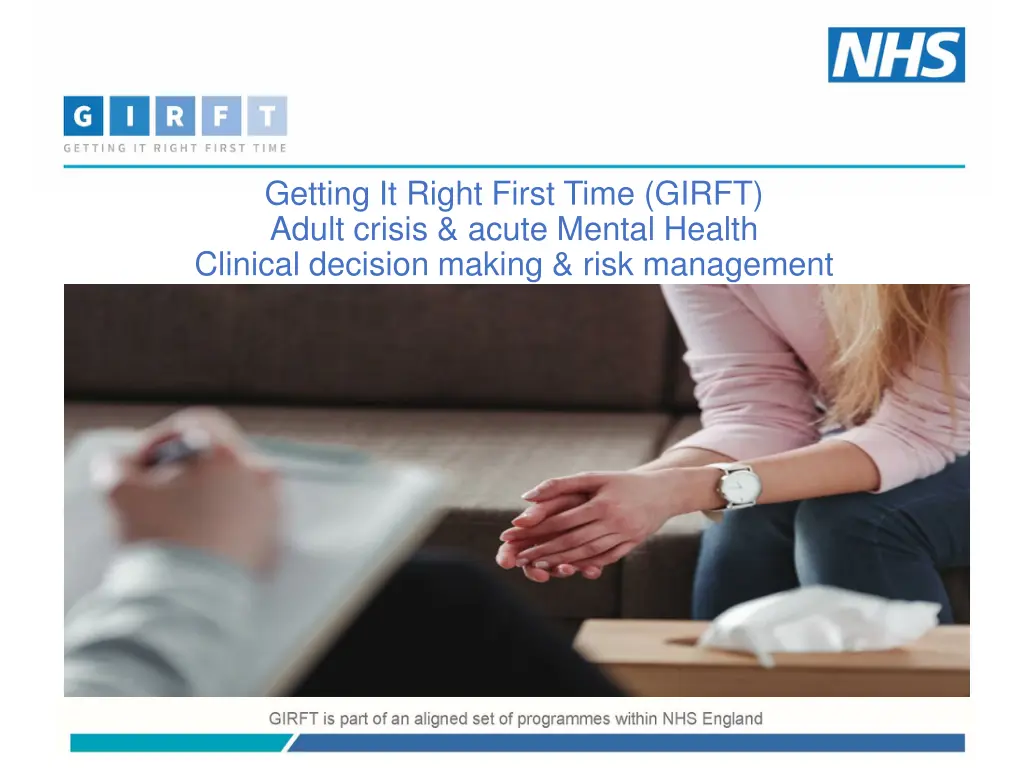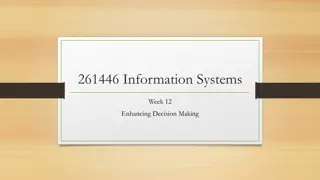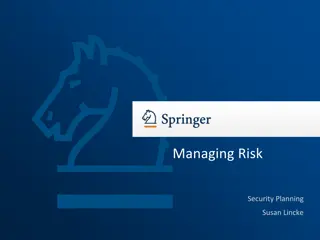
Adult Crisis & Acute Mental Health: Clinical Decision Making & Risk Management
Explore the importance of therapeutic benefit in mental health decision-making, distinguishing between risk and benefit in clinical interventions. Understand the nuances of admissions for assessment and treatment in mental health care settings.
Download Presentation

Please find below an Image/Link to download the presentation.
The content on the website is provided AS IS for your information and personal use only. It may not be sold, licensed, or shared on other websites without obtaining consent from the author. If you encounter any issues during the download, it is possible that the publisher has removed the file from their server.
You are allowed to download the files provided on this website for personal or commercial use, subject to the condition that they are used lawfully. All files are the property of their respective owners.
The content on the website is provided AS IS for your information and personal use only. It may not be sold, licensed, or shared on other websites without obtaining consent from the author.
E N D
Presentation Transcript
Getting It Right First Time (GIRFT) Adult crisis & acute Mental Health Clinical decision making & risk management
Therapeutic benefit Key clinical question why this particular person in this particular way at this particular time? We are poor at predicting individual risk, and risk tools do not improve this. We cannot honestly promise to keep anyone safe. We can try to make things safer by using best treatments Risk alone should not be the driving factor in clinical decision making. It is always a benefit/harm balance It needs to be therapeutic benefit i.e., how can we best help this person back to best level of mental health by best addressing predisposing, precipitating & perpetuating factors to their first episode/relapse? If we do that likelihood is that benefits increase and harms decrease Admission is not a neutral act. It can bring therapeutic benefits but it can also bring harms, and the longer the admission the more harms accrue. No intervention (physical, psychological, pharmacological, social) works for everyone, all carry potential harms, all carry potential benefits. All intervention choices (including doing nothing) involve weighing up the likelihood that benefit outweighs harm for that person.
Record reason(s) for admission: The purposive admission Terms such as for assessment , detained under MHA , to manage risk are vague and not useful to deliver a purposive admission Main categories of admission: 1) Assessment & 2) Treatment (treatment as defined in the MHA to include any pharmacological, physical, psychological or social intervention being used as a part of an inpatient episode of care) Assessment What needs assessing that is not already known/ cannot be assessed just as well in the community? Why is it unknown and needing assessment despite the existing information in records/ from this community assessment that decision inpatient assessment was required? Treatment What treatment(s) is required? Was previous successful treatment ceased for any reason? Is previously successful treatment no longer working? Is this a known type of relapse? If so, what usually helps the person back to remission quickly? Are there any known new / recent factors in the persons life that may be contributing to this need for admission & which need urgent attention? Why is the treatment necessary? Why can it not be delivered in the community at least as well as in hospital? Of the necessary treatments; which are essential to be done now / in hospital to get the person back to community care & treatment as soon as possible? Which can await return to community to be done?
If an inpatient admission is required; what needs to be done to get the person back to the community as soon as feasible? In addition to specific treatment(s) identified, are there any other necessary steps required for the person to be able to return to the community as soon as clinically ready? Do they have other health conditions or disabilities to take into account? Has the person got a residence to return to? Or for any reason do they need new accommodation? Do they have financial issues which need addressing? Are there any reasonable adjustments to put in place and are these documented in an accessible format to the inpatient team?
Estimated date of discharge The estimated date of discharge should ideally be person-centredand take into account any known pattern from previous admissions. In the absence of such information, it should be a reasonable estimate based on the admission information and the median length of stay for people in this service for that cluster. If the estimate at admission is for over 60 days this should be escalated immediately upon admission as being very high risk of becoming stranded It is an estimate so can alter over time either getting shorter or longer. If it does change it is important to ensure all key people are notified of change and reason for it. Over time collecting this information will allow analysis against actual date of discharge to better plan individual patient journeys and bed availability






















